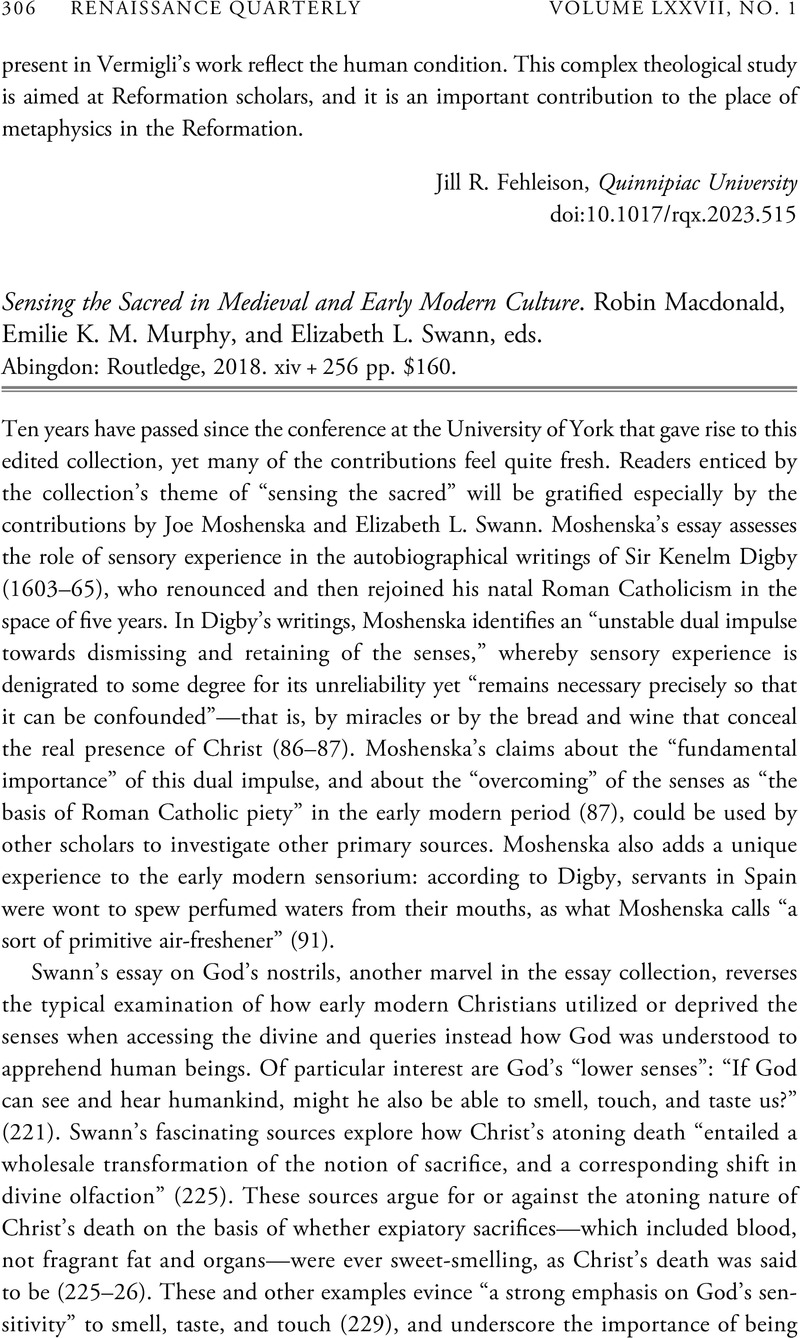No CrossRef data available.
Article contents
Sensing the Sacred in Medieval and Early Modern Culture. Robin Macdonald, Emilie K. M. Murphy, and Elizabeth L. Swann, eds. Abingdon: Routledge, 2018. xiv + 256 pp. $160.
Review products
Sensing the Sacred in Medieval and Early Modern Culture. Robin Macdonald, Emilie K. M. Murphy, and Elizabeth L. Swann, eds. Abingdon: Routledge, 2018. xiv + 256 pp. $160.
Published online by Cambridge University Press: 24 April 2024
Abstract
An abstract is not available for this content so a preview has been provided. Please use the Get access link above for information on how to access this content.

- Type
- Review
- Information
- Copyright
- Copyright © The Author(s), 2024. Published by Cambridge University Press on behalf of The Renaissance Society of America



